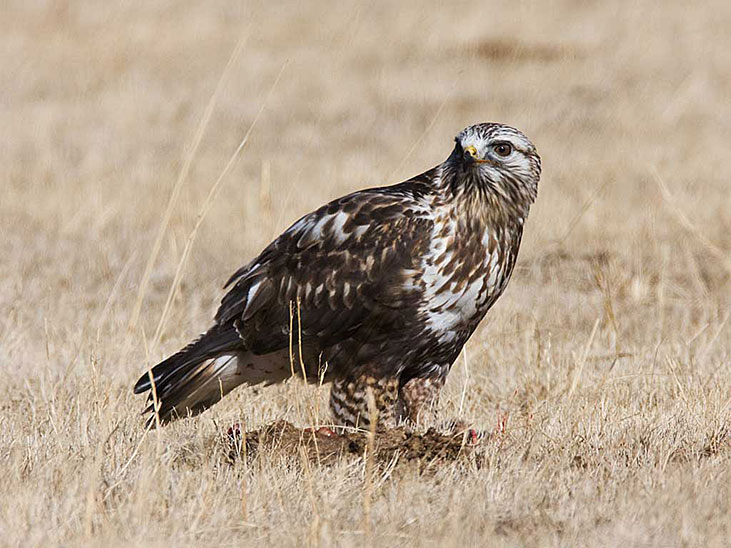The Rough-legged Hawk is a relatively large hawk with broad wings. Compared to other hawks, these birds are somewhat narrow and long. Their wings have an m-shape thanks to the broad wingtips with a swept-back look from the wrist. Their bills are on the smaller side as well.
The Rough-legged Hawk spends its time in the arctic tundra catching lemmings in the summer months and tending to their nests on the cliffside under a sun that never sets.
However, you are most likely to see this open-country hawk in the winter months. During this time, they’re in the U.S. and southern Canada. They often hover over marshes or pastures, hunting for small rodents or perching on poles.
On this page
Identification
The Rough-legged Hawk is a dark-brown, boldly patterned hawk. Their tails are pale at the base and dark at the tip. Like many hawks, these birds occur in dark and light morphs. Light morphs have dark patches at the bend of the wing and pale underwings.
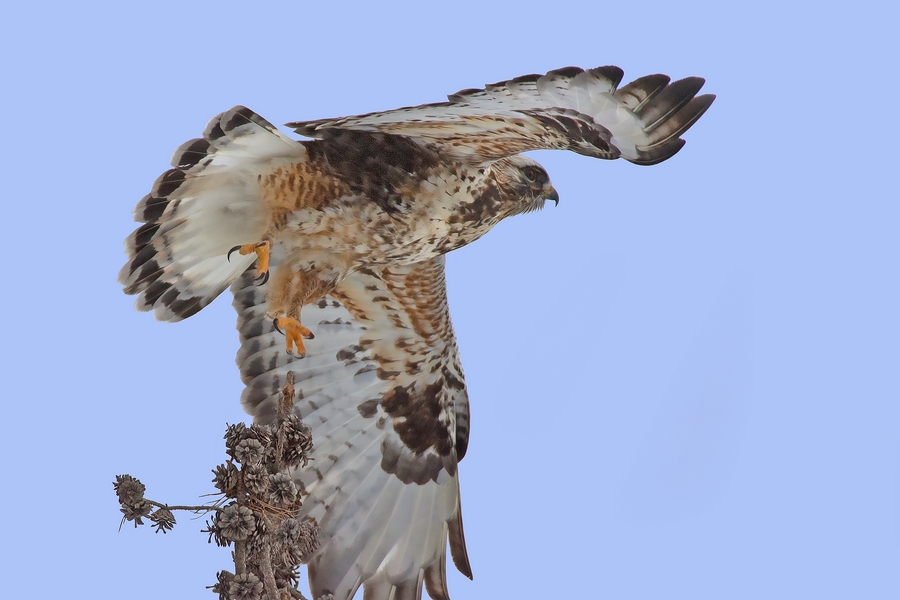
Rough-Legged Hawk, Near Logan Lake, British Columbia
Rough-legged Hawks have dark belly patches and pale heads with a more mottled pattern in comparison to females. Dark morphs have pale trailing edges to the underwing and are mostly dark brown.
These birds are 18.5 to 20.5 inches (47 to 52 centimeters) long, weigh 25.9 to 49.4 ounces (715 to 1400 grams), and have a wingspan of 52.0 to 54.3 inches (132 to 138 centimeters). They are less bulky and a little bit smaller than a Red-tailed Hawk and bigger than an American Crow.
Female Rough-legged Hawks look almost identical to Male Rough-legged Hawks.
Juvenile light morph Rough-legged hawks have mottled brown upper wings, light heads, tails with a dark band at the tip and a white base, and distinct white panels in their primaries.
Young dark morph Rough-legged hawks are almost entirely chocolate-brown except for the pale flight feathers on the underside. The tail usually has narrow white bands.
Food
Rough-legged Hawks are aggressive and opportunistic hunters. Their food choices change based on the location that they’re in.
These birds mainly consume shrews, mice, and voles on their wintering grounds. On their breeding grounds in the arctic, they eat some mammals like young hares, pocket gophers, ground squirrels, and birds such as Lapland Longspurs and ptarmigan.
Learn more: What do hawks eat?
However, they mostly consume small rodents such as voles and lemmings. The Rough-legged Hawk hunts in flight by hovering in the wind, dropping down on prey, or pursuing prey. They will also hunt from raised perches such as trees, utility poles, haystacks, and fence posts. They’ve also been known to sometimes steal from ravens and other hawks or feed on carrion.
Nesting and Eggs
The male Rough-legged Hawk is the one to choose the nesting site on the cliffside. Nests are almost always entirely open rather than covered by overhangs. The mated pair will sometimes create a new nest near an old one or reuse a nest. They sometimes nest high on structures built but humans or in trees.
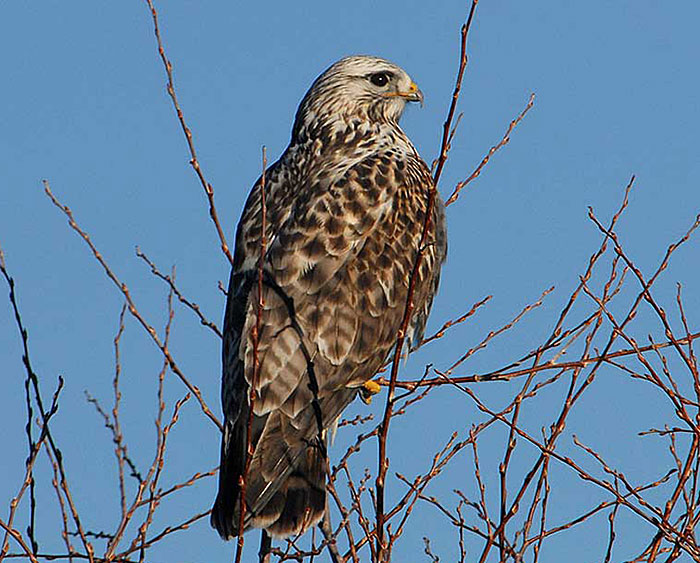
These nests are very bulky and are made from willow tree sticks and other arctic plants. Rough-legged hawks often supplement the nest with caribou bones. It measures anywhere from 10 to 24 inches tall and 24 to 35 inches wide.
The lining of the nest may include sedges, grasses, fur from prey, molted feathers, and small twigs. The female will spend 3 to 4 weeks making the nest from materials the male has collected.
Rough-legged Hawks generally have 1 to 7 eggs, they incubate the eggs for up to 37 days. The young hawks stay in the nest for 31 to 45 days.
Current Situation
There’s not much information on the Rough-legged Hawks population; however, their population appears stable. Their breeding population is estimated to be about 590,000.
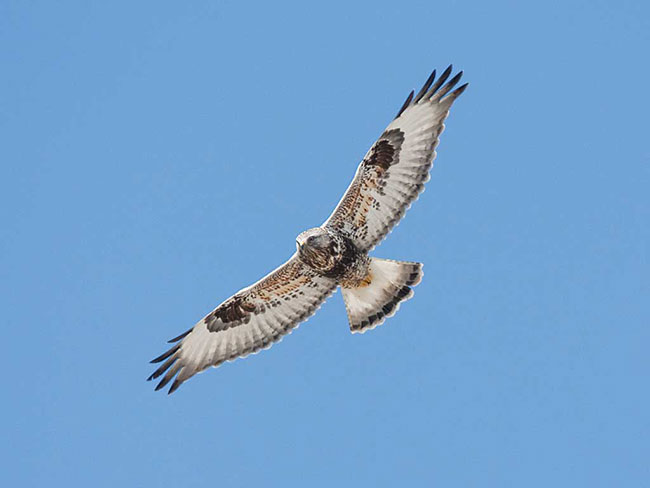
However, their populations change regionally due to severe weather on their breeding grounds in the tundra and boreal forests of the far north and prey availability.
The birds breed in the open country of the arctic, both in Eurasia and North America. They nest on outcroppings and cliffs in treeless tundra, low-lying boreal forests, alpine regions, and uplands, both coastal and inland. In tree-covered areas, they hunt over open bogs and other clearings.
Rough-legged hawks winter in most of the United States and across southern Canada in open country. This includes shrubsteppes, prairies, semideserts, marshes, fields, dunes, and bogs.
Facts
- The Rough-legged Hawk is the only hawk species that can hover in one spot by rapidly beating its wings.
- These birds are 1 of 3 hawk species in the U.S., with feathers all the way to their toes. This is an adaptation for life in cold climates.
- The oldest recorded Rough-legged Hawk lived to be at least 17 years and 9 months old. She was a female and was found in Illinois in the late 1970s.
- Their productivity is closely tied to prey. In years with high populations of prey, more eggs were produced, and more chicks survived.
- The Rough-legged Birds scientific name, lagopus, is Ancient Greek for “hare” and “foot.” This refers to the birds’ feathered toes and feet.
Similar Species
The Rough-legged Hawk has features that are similar to other birds. Here are some similar species:
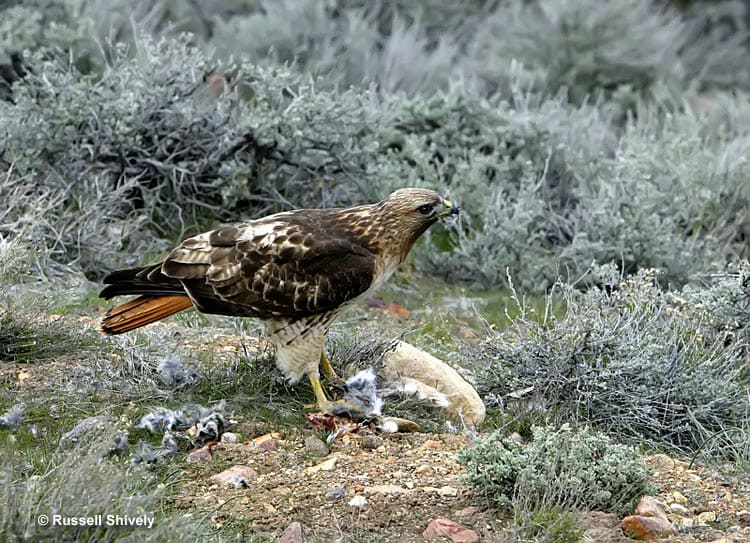
Red-tailed Hawk
Adult Rough-legged Hawks can have a big dark patch on the belly (females) or a heavily streaked breast (males), while adult Red-tailed Hawks have dark streaks on their belly and a tail that is not banded.
Red-tailed Hawks don’t have the big, dark patches at the wrist that Rough-legged Hawks have as well as broader wings.
Finally, juvenile Red-tailed Hawks have narrow bands on their tails but lack the dark tail tip and white tail base of light-morph Rough-legged Hawks.
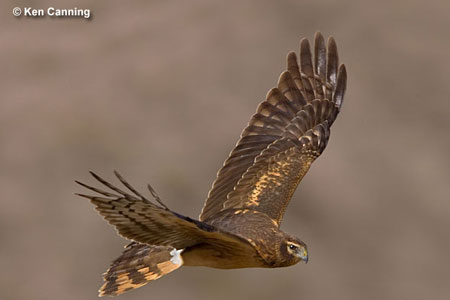
Northern Harrier
The Northern Harriers have longer tails and wings than Rough-legged Hawks and are more slender-bodied. They also look more unstable in flight.
Additionally, all plumages of these birds lack the dark wrist patches and heavy dark body markings of Rough-legged Hawks.
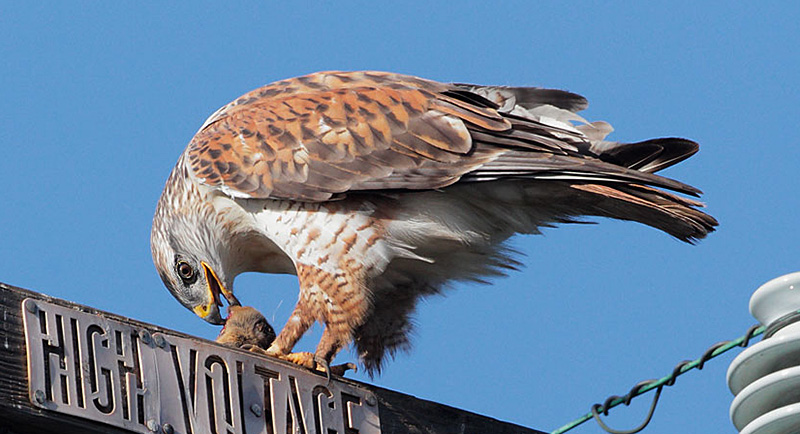
Ferruginous Hawk
Rough-legged Hawks have smaller bodies than Ferruginous Hawks.
Ferruginous Hawks have linear wings that narrow toward the tips, are paler below, and lack wrist patches and bold markings on the belly and breast.
Frequently Asked Questions
Is a Rough-Legged Hawk a predator?
Yes, the Rough-legged Hawk is a predator. Their food choices change based on the location that they’re in. These birds mainly consume shrews, mice, and voles on their wintering grounds.
On their breeding grounds in the arctic, they eat some medium-sized mammals like pocket gophers, ground squirrels, young hares, and birds such as Lapland Longspurs and ptarmigan. However, they mostly consume small rodents such as voles and lemmings.
How to identify a Rough-Legged Hawk?
The Rough-legged Hawk is a dark-brown, boldly patterned hawk. Their tails are pale at the base and dark at the tip. Like many hawks, these birds occur in dark and light morphs. Light morphs have dark patches at the bend of the wing and pale underwings.
Male Rough-legged Hawks have dark belly patches and pale heads with a more mottled pattern in comparison to females. Dark morphs have pale trailing edges to the underwing and are mostly dark brown.
Where are Rough-Legged Hawks found?
Rough-legged Hawks breed in the open country of the arctic, both in Eurasia and North America. They nest on outcroppings and cliffs in treeless tundra, low-lying boreal forests, alpine regions, and uplands, both coastal and inland.
How big is Rough-Legged Hawk’s wingspan?
The Rough-legged Hawk has a wingspan of 52.0 to 54.3 inches (132 to 138 centimeters).

